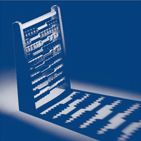New ‘Lifetime ISA’
Background
From April 2017 the Government introduced the new Lifetime Individual Savings Account (ISA) to provide an another option for younger people looking to save flexibly for the future.
The Lifetime ISA is intended to be a longer-term tax-free savings account that will provide savers with a 25% bonus on the amount they put into their account. As with other ISAs no tax will be payable on any interest, income or capital gains from cash or investments held within a Lifetime ISA.
Lifetime ISAs can hold cash, stock and shares, or a combination of both, similar to existing ISAs.
Detail
The Lifetime ISA is available to any UK resident aged 18 to 39, and is intended to help those saving for their first home or for retirement.
There is an annual limit of £4,000 that can be paid into an individual’s Lifetime ISA, and the government will add a 25% bonus to the amounts paid in, up to a maximum of £1,000 a year. The bonus will be paid by HMRC at the end of the tax year for 2017/18, but for subsequent years bonus amounts will be added to the ISA on a monthly basis. It should also be noted that the £4,000 limit will form part of the overall annual ISA limit, which for 2017/18 tax year is £20,000.
Payments can continue to be made into the Lifetime ISA until the saver reaches 50. The account can stay open after this, but no more payments can be added to it, and savings remain tax-free as long as the money stays in the Lifetime ISA.
Withdrawals and transfers
The funds held in the Lifetime ISA can be withdrawn at any time, but from 6 April 2018 they will be subject to a withdrawal charge of 25% of the amount withdrawn, except in the following circumstances:
- For use towards purchase of a home by a first-time buyer
- If the individual is aged 60 or over
- If the individual is terminally ill
- Transfer to another Lifetime ISA with a different provider (transfer to a different type of ISA will not qualify)
This withdrawal charge could result in receiving back less than the growth in the fund. For example, if an individual pays in the maximum annual amount of £4,000 and receives the government bonus of £1,000, but then withdraws the full £5,000 they would receive back £3,750 after the 25% charge is applied to the £5,000 withdrawn.
Buying a first home
The Lifetime ISA savings and bonus can be used towards buying the individual’s first home without incurring a withdrawal charge if:
- The house is valued at less than £450,000
- The purchase is with a mortgage
- A conveyancer or solicitor is used for the purchase, and the funds are paid directly to them by the Lifetime ISA provider.
The Lifetime ISA must also have been open for at least 12 months before funds can be withdrawn towards the purchase of the individuals first home. Therefore, it will be April 2018 before such funds will be available to first time buyers.
If an individual is buying with another first time buyer, and they each have a Lifetime ISA, then they will both be able to use their government bonus towards the purchase.
The Help to Buy ISA has been available to first time buyers for a while now but the interaction between a Help to Buy ISA and a Lifetime ISA is quite complicated so individuals who already have a Help to Buy ISA should seek professional advice before taking out a Lifetime ISA
Whilst a Lifetime ISA may not be appropriate for everyone due to the exit penalties associated with withdrawals other than for the permitted reasons, they do offer an attractive tax-free option for younger people looking to buy their first home or starting to save towards retirement. It is worth remembering that it does not have to be the individual themselves who pays into the Lifetime ISA, it may be a option for parents or grandparents who want to help contribute towards their child or grandchild’s savings.
If you have any questions on the above or require more information please contact our Tax Director, Jenny Marks.
To see our other news items please visit our Muras Baker Jones – Blog.



